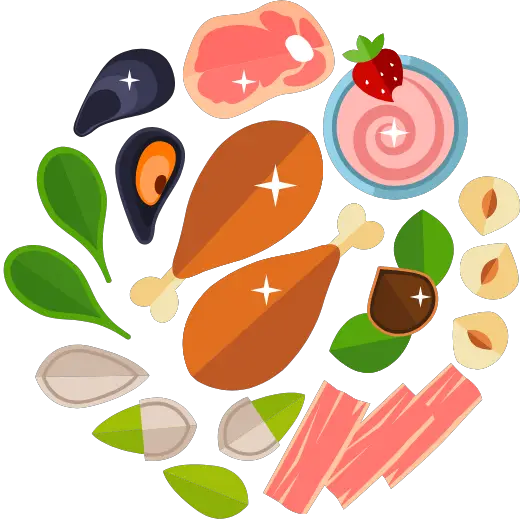When we think of Mexican food, our minds often fill with vibrant images of tacos, enchiladas, and tamales. Behind these world-famous dishes lies a single, humble, yet profoundly powerful ingredient: maize, or corn. To truly appreciate the depth and soul of Mexican cuisine, one must first understand the story of this remarkable grain. It is a story of ancient innovation, sacred sustenance, and the agricultural bedrock upon which entire civilizations were built.
Maize is far more than a simple crop in Mexico; it is the cultural and culinary cornerstone of a nation. Its journey from a wild grass to the foundation of a modern diet is a testament to human ingenuity and a deep, respectful relationship with the land. We invite you to explore this fascinating history and discover why corn is, and always has been, the heart of Mexico.
1. The Divine Grain: Domestication and the Dawn of Civilization
The story of corn begins nearly 9,000 years ago in the highlands of Mexico. It did not always exist as the plump, juicy cobs we know today. Its ancestor was a wild grass called teosinte, which produced only a handful of small, hard-cased kernels. Through incredible foresight and generations of selective breeding, the ancient peoples of Mesoamerica gradually transformed this wild plant into the life-sustaining crop we now call maize.
This act of domestication was one of the most significant agricultural achievements in human history. The reliable, high-yield nature of maize allowed nomadic hunter-gatherer groups to settle, establish permanent villages, and develop complex societies. The great civilizations of the Olmec, Maya, and Aztec were all, quite literally, built on corn. It was their primary source of calories and the engine of their economies. For these cultures, maize was a sacred gift from the gods, central to their creation myths and religious rituals.
2. Nixtamalization: The Alchemical Key to Nutrition
The genius of these ancient peoples did not stop at domestication. They also developed a revolutionary process known as nixtamalization, a technique that unlocked the full nutritional potential of maize and defined the future of Mexican cuisine.
The process involves soaking and gently cooking dried maize kernels in an alkaline solution, typically water mixed with calcium hydroxide (known as cal in Spanish, or slaked lime). This seemingly simple step has profound effects:
- Nutritional Enhancement: Nixtamalization releases niacin (vitamin B3) from the corn, making it available for human absorption. This prevented widespread nutritional deficiencies like pellagra, a disease that plagued other cultures that adopted corn without this traditional knowledge. The process also increases the body’s ability to absorb calcium and other minerals from the grain.
- Culinary Transformation: The alkaline bath softens the hard outer hull of the kernel, making it easy to remove. This allows the corn to be ground into the soft, pliable dough known as masa. This process also fundamentally changes the flavor and aroma of the corn, giving it the distinctive, earthy taste that is the signature of a fresh tortilla.
Without nixtamalization, there would be no masa, and therefore no tortillas, tamales, or sopes. It is the single most important culinary technique in Mexican cooking, a brilliant scientific discovery that ensured the health and well-being of millions for millennia.
3. The “Three Sisters”: A Model of Sustainable Agriculture
The agricultural wisdom of ancient Mesoamericans is further showcased in the cultivation system known as the “Three Sisters.” This is a symbiotic planting method featuring the region’s three core crops: maize, beans, and squash. Planted together, they form a mutually beneficial ecosystem:
- Maize grows tall, providing a natural pole for the bean vines to climb towards the sunlight.
- Beans, being legumes, pull nitrogen from the air and fix it in the soil, enriching the earth and fertilizing the maize and squash.
- Squash spreads its large leaves across the ground, acting as a living mulch that prevents weeds, retains soil moisture, and deters pests.
This agricultural trinity is also a model of nutritional synergy. The corn provides carbohydrates, the beans provide protein and amino acids that corn lacks (creating a complete protein when eaten together), and the squash offers a wealth of vitamins and healthy fats. The Three Sisters represent a holistic and sustainable approach to agriculture that has been practiced for centuries.
4. The Culinary Universe of Masa
Once nixtamalized maize is ground into masa, it becomes the versatile foundation for an entire universe of dishes. The creativity of Mexican cooks has transformed this simple dough into an astonishing variety of forms, textures, and flavors.
- Tortillas: The daily bread of Mexico. These thin, flat discs are used as an edible utensil to scoop up food, as the wrapper for tacos, or as the base for enchiladas and chilaquiles.
- Tamales: A celebratory dish where a portion of masa, often filled with meat, cheese, or chilies, is wrapped in a corn husk or banana leaf and steamed to perfection.
- Sopes, Huaraches, and Tlacoyos: Thicker masa cakes that are cooked on a griddle, often lightly fried, and then topped with beans, salsa, cheese, and other ingredients.
- Pozole: A hearty, ancient stew made not from masa, but from whole nixtamalized corn kernels (hominy), typically simmered with pork or chicken in a rich, chili-infused broth.
- Atole: A warm, thick, and comforting drink made by dissolving masa in water or milk, often sweetened and flavored with cinnamon or fruit.
From the simplest street food to the most elaborate festive meal, the presence of corn is a constant. It is a thread that connects every region, every generation, and every social class in Mexico.
To explore Mexican cuisine is to explore the legacy of maize. It is a story of innovation, sustainability, and deep cultural reverence. The next time you enjoy a warm tortilla or a savory tamal, we encourage you to reflect on the incredible journey of this grain—from a wild grass to the sacred foundation of a civilization.
